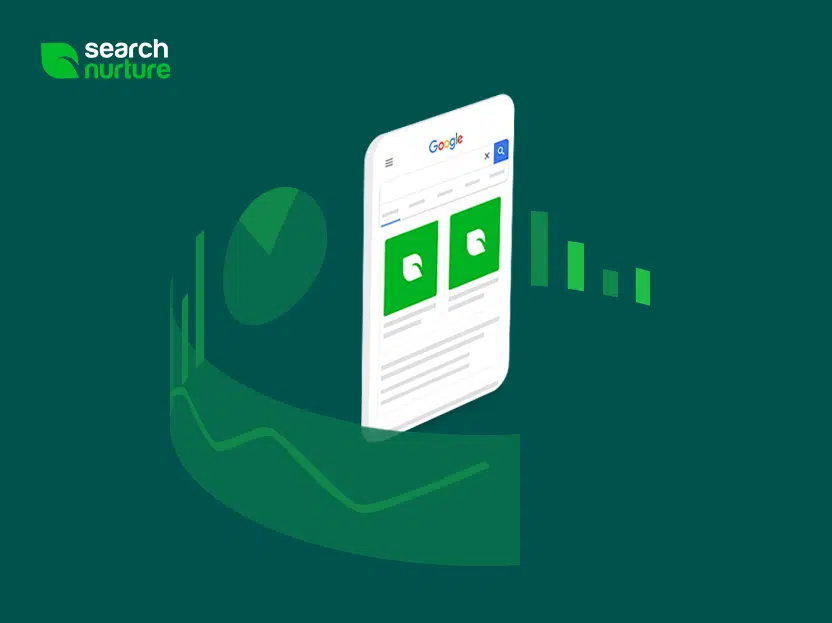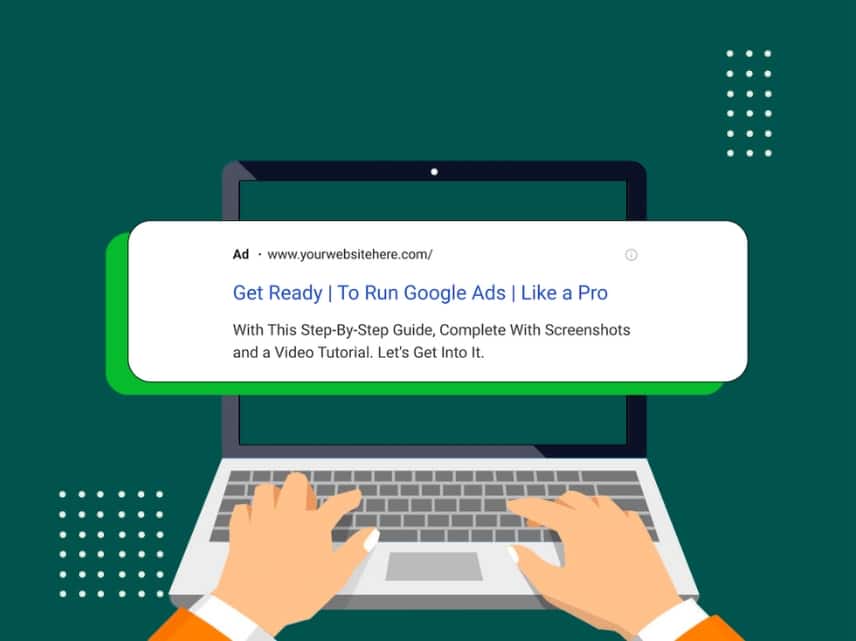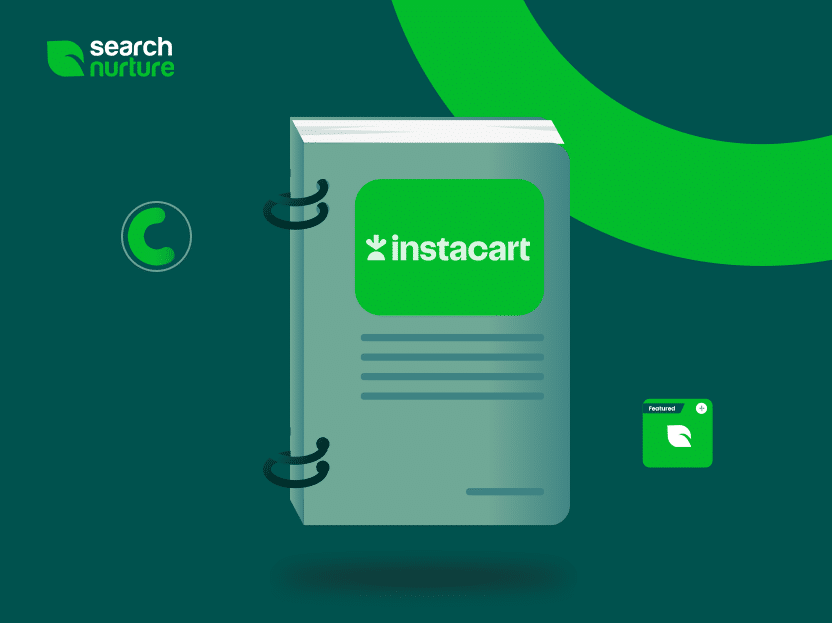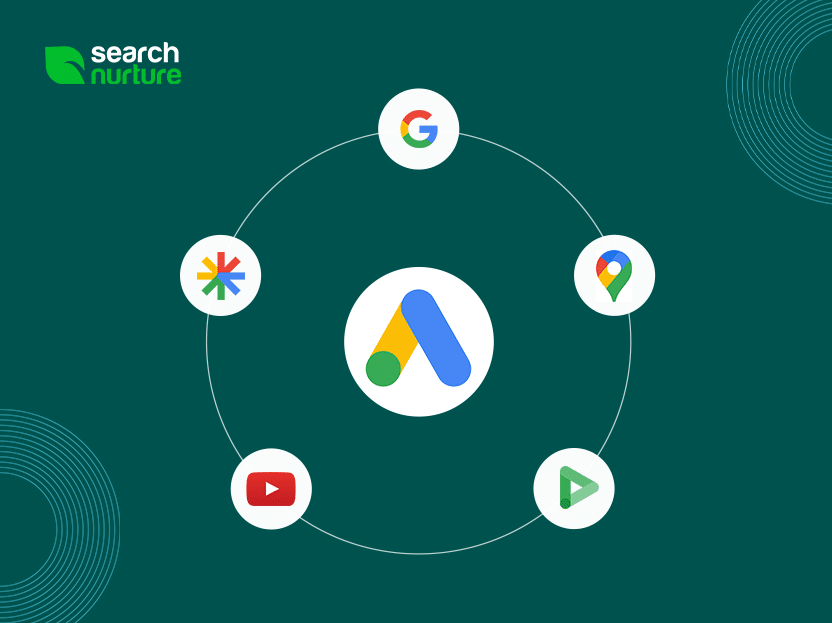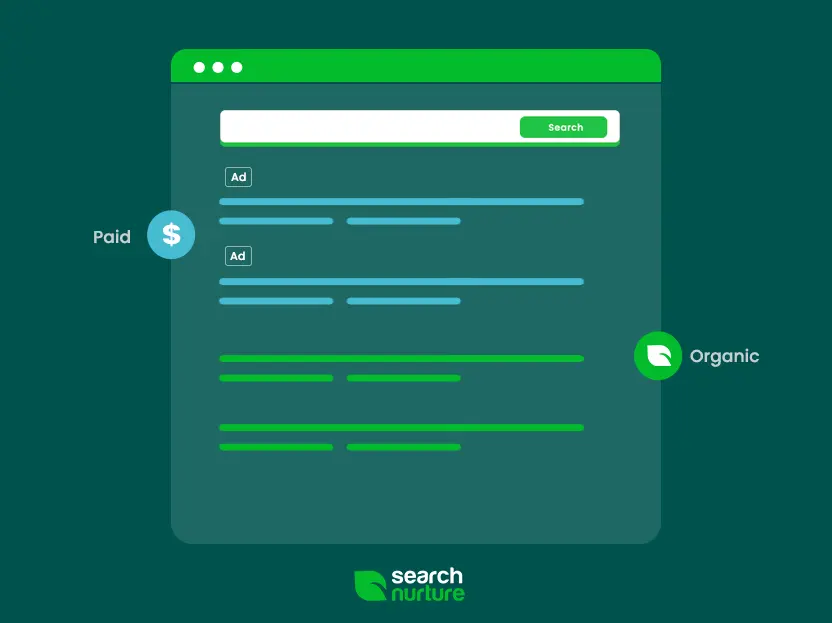A Google Ads Audit can help influence your account strategy leading you to your desired goals. Unfortunately, Google Ads can be a complicated platform to work in — with unlimited variables to utilize. In this article, I’ll run through a quick, comprehensive process so you can quickly get the results you want.
Review of Account Structure
Use the Pareto principle to focus on the services/products that generate your business’s most revenue.
You want your account structured such that it allows you to have as much control as possible for the following:
- Budget
- Targeted locations
- Targeted audiences
- Bidding
- Overall management
Review Conversion Goals
Aside from tracking SMART goals, ensure your account is tracking Conversion goals that have inherent value for your business, such as transactions (eCommerce), calls, or contact forms.

To have accurate conversion data, make sure these are set up correctly with:
- Value – assigned monetary value if applicable to track ROAS
- Count – set to Unique (recommended for leads and sign-ups considering the first interaction is valuable) or set to Every (recommended for purchases since each purchase is valuable)
- Click-through conversion window – up to 90 days since conversions can happen days after a person clicks on your ad
- View-through conversion window – up to 30 days since conversions can happen days after a person view your ad but didn’t click on it
- Include in “Conversions” – set to Yes so you can see the data when analyzing campaign performance
- Attribution model – set to your preference (Data-Driven, Last Click, First Click, Linear, Time Decay, or Position-based)
Campaign Settings
Let’s quickly go through your variables:
- Campaign name – Ensure your campaign name is formatted according to the goal, structure, targeting method, and targeted audience.
- Search partners – If you want to show your ads in Google search partners (sites in the Search Network that partner with Google to show ads on their search results).
- Locations – Target only countries, states, cities, and zip codes where you want your ads to show.
- Languages – Select only languages spoken in the area where you want to show your ads (e.g., Spanish, where there is a large Latino population).
- Budget – Daily budget x the number of days in a month should match the allocated budget for this campaign to avoid over/underspending.
- Bidding – Depending on the bandwidth of the person managing the account and if there is enough conversion volume, automated bid strategies can be used, considering they take more than 250 data points to make bid adjustments and increase performance.
- Ad Rotation – Use the “Optimize: Prefer best performing ads” option considering it shows the ads expected to get more clicks or conversions.
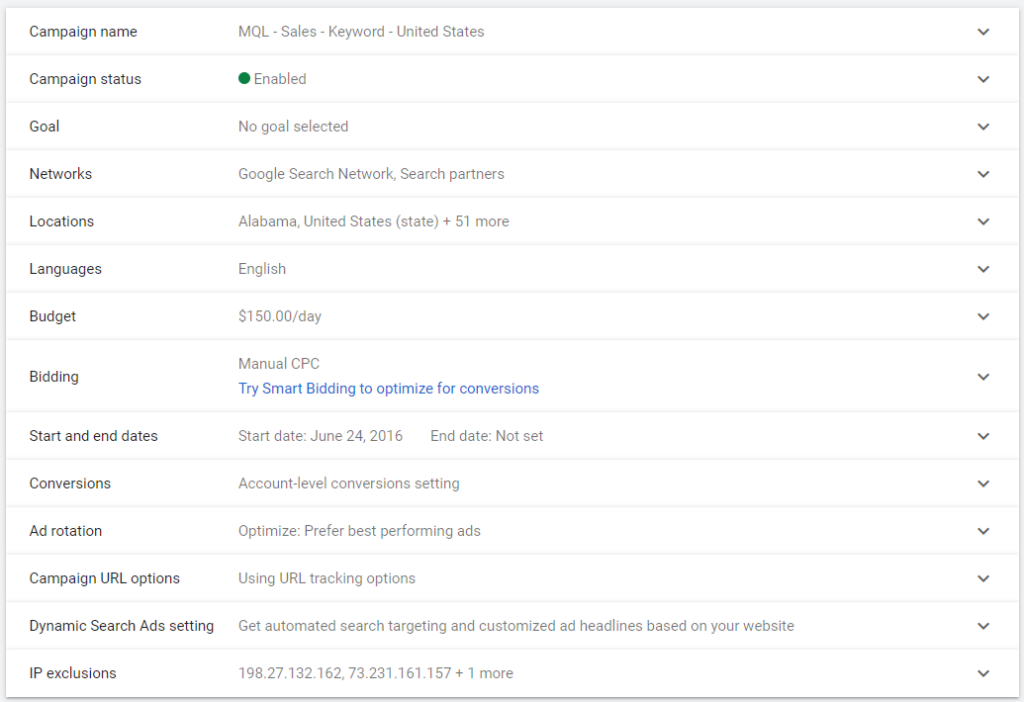
- Location advanced settings – Set to target people regularly in your targeted locations, and exclude people regularly in — or who have shown interest in your excluded locations.
Note: If you’re in the hospitality industry or an industry that provides products or services internationally, the above won’t apply.
Targeted Locations Advanced Settings

Other campaign settings (located on the left side menu)
- Ad Schedule – Ensure your ad schedule (days of the week and hours of the day) matches your business model. Don’t use 24/7 for a business that generates most of their business through calls and only operates Monday to Friday from 9 am to 5 pm.
- Devices – Verify that bid adjustments are not set in a way that is hurting overall performance (i.e. negative bid adjustment on mobile when the majority of your leads are coming through calls — or negative bid adjustment on desktops for B2B businesses that tend to get most of the conversions through desktops)
Ad Groups
Make sure your ad groups contain keywords and ad copy with landing pages that are relevant to them. Doing so will increase your Quality Score while reducing your Avg. CPC and increasing the probability of generating a conversion.
Keywords
Make sure your keywords are relevant to your business and the corresponding ad group they are in. Avoid using broad keywords considering these tend to generate a lot of irrelevant traffic and spend a significant amount of your budget. Instead, I recommend using exact [ ], phrase “” and BMM (Broad Match Modifier) + match types.
Ads
Each ad-group should generally align with the following:
- Two to three Expanded Text Ads
- One Responsive Ad
- Address your potential clients’ needs and include their unique selling points.
- Provide clarity and be direct with your call to action (CTA).
- Utilize local numbers and the name of the city your business is located in, if applicable.
- People tend to prefer local businesses over nationwide corporations.
- Address your audience using “you” or “your” to make things personal.
Landing Pages
Ensure your landing pages have an excellent score to maintain/obtain an above-average landing page experience, impacting your quality score and avg. CPC.
Additionally, you can quickly assess your landing pages and identify what changes can be made to improve your scores with the following tools:
Review Performance
Review your campaign’s performance to ensure it meets your campaign cost/conversion and ROAS goals!
I’m confident that this 30-minute ad audit will help you assess the structure of your business’ Google Ads account and ensure the overall budget is used as efficiently as possible. If you’d like help with the management of your Google Ads account, reach out here.


